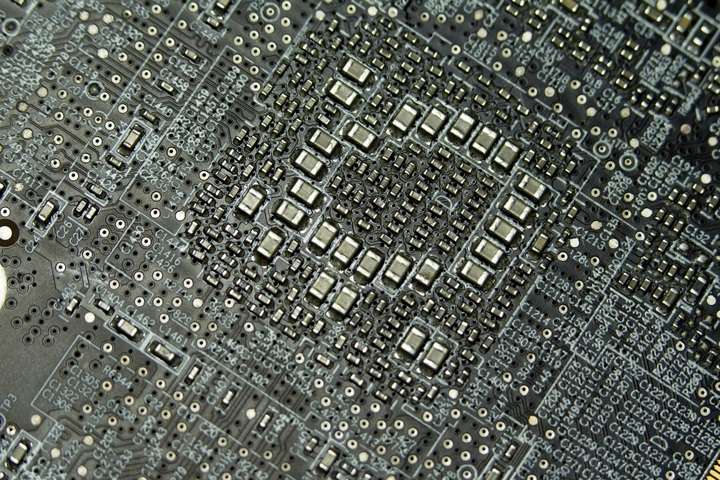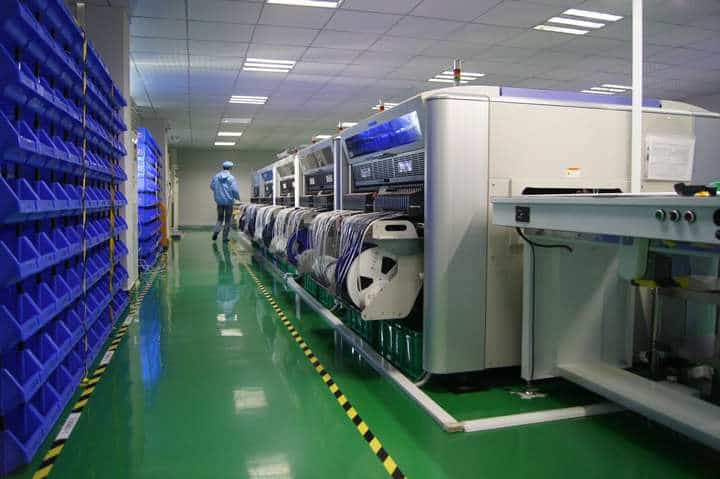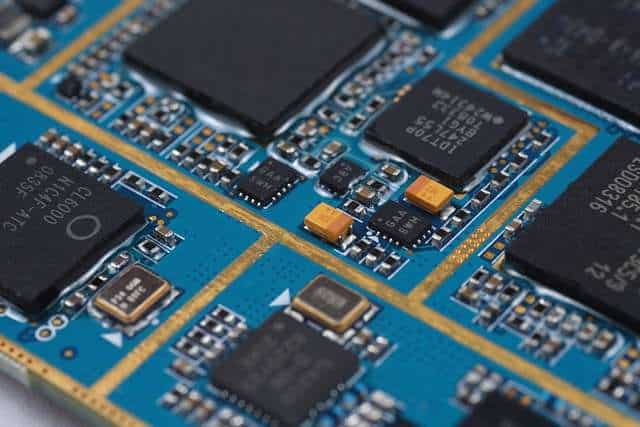Surface-mount technology (SMT) refers to the assembly of electronic components using automatic machines that install components on the board’s surface. Moreover, this board is known as a printed circuit board, or PCB. When it comes to electronic assembly, SMT is the most popular method in the industry.

JLCPCB is offering very attractive rates for PCB manufacturing and assembly. They are willing to produce 1-4 layer PCB for as low as $2 and additionally, you can get free PCB assembly once a month. This is a great opportunity to check
What are the steps in the Process of SMT manufacturing?
- The first step is to examine and prepare the materials, prepare the SMC and PCB, and test them to see if they have any faults.
- The second step is the Preparation of the stencil. For solder paste printing, a stencil is useful to establish a fixed position.
- Thirdly, printing with solder paste.
- The next step is the placement of SMC.
- Then comes reflow soldering is the process of reflowing a solder joint.
- The last step is inspection and cleaning.
What is the use of SMT?
SMT’s key benefit is that it allows for automatic manufacture and soldering. Furthermore, this saves money and effort while also ensuring a more uniform circuit. The reductions in manufacturing expenses frequently passed on to the client, making it a win-win situation for all.
What are the responsibilities of the SMT Expert?
The equipment used to fabricate electrical circuits with surface mount technology is monitored and maintained by an SMT operator. Moreover, his main responsibilities include using an SMT machine to mount electrical components onto circuit boards directly.
Measures to Improve SMT Assembly Product Quality during Manufacturing Process
- Measure#1: Solder Paste Printing Technology and Quality Management.
- Measure#2: Placement Technology and Quality Management.
- Measure#3: Soldering Technology and Quality Management
What is the difference between SMT and THT?
Usually, the great majority of PCB was built using through-hole technology (THT). Furthermore, surface-mounted technology (SMT) has risen in prominence in recent years, and it is increasingly being employed in favor of through-hole technology.
Because no holes need to drill, bare board costs are lower, and production times are shorter. SMT components are up to 10 times faster to install than THT components. In reflow ovens, the solder is much more reliable and can be done rapidly and uniformly.
In most current electronics manufacturing facilities, surface mount technology (SMT) is automated. Not unexpectedly, this lowers the average cost of a custom PCB board, at least in terms of labor.
Detail of SMT Manufacture Process

Here in this section, I am going to discuss the complete detail of the SMT manufacturing process. This process contains the following steps.
1. Material preparation and examination
Prepare the SMC and PCB and exam if there are any flaws. The PCB normally has flat, tin-lead, silver, or gold plated copper pads without holes, called solder pads.
2. Stencil preparation
Stencil is used to providing a fixed position for solder paste printing. It’s produced according to the designed positions of solder pads on PCB.
3. Solder paste printing
Solder paste, usually a mixture of flux and tin, is useful for connecting the SMC and solder pads on PCB. It applies to PCB with the stencil using a squeegee on an angle range from 45°-60°.
4. SMT placement

The printed PCB then proceeds to the pick-and-place machines, where they are carried on a conveyor belt, and the electronic components are placed on them.
5. Reflow soldering
- Soldering Oven: The board needs to place in the reflow of the soldering oven after applying SMC.
- Pre-heat Zone: Preheat is the first zone in the oven where the temperature of the board and all of the components got to rise. In this portion, the temperature ramps up at a rate of 1.0°C-2.0°C every second until it reaches 140°C-160°C.
- Soak zone: The boards will hold in this zone for 60-90 seconds at a temperature of 140°C-160°C.
- Reflow Zone: The boards next enter the reflow zone, where the temperature rises at a rate of 1.0°C-2.0°C per second to a high of 210°C-230°C, melting the tin in the solder paste and attaching the component leads to the PCB pads. The molten solder’s surface tension helps keep the components in place.
- Cooling zone: A segment designed to guarantee that solder does not freeze as it exits the heating zone, preventing connection defects.
6. Clean and inspection
After soldering, clean the boards and inspect them for defects. Rework or mend the flaws, then store the items. Magnifying lenses, AOI (Automated Optical Inspection), flying probe testers, and X-ray machines are all common SMT tools.

SMT Components That Don’t Fit Into the Automated Assembly Process
Even while the automatic pick-and-place devices will use to position most of the components, some will not. This could be due to many factors:
Too light
Some components are too light and have a low mass-to-adherence ratio for automated placement equipment, necessitating manual soldering.
Thermal stress
Other components may be susceptible to heat and are unsuitable for use in the solder reflow oven. To preserve certain components, they must assemble after the standard assembly process.
Robust solder joints
Connector leads, for example, require a more strong solder bond. To accommodate this, certain parts will be manually soldered.
Panelization separation:
Some components may destroy when the individual boards are separated from their assembly panels. The components will be assembled after the boards have been broken out of the panel in these instances.
Why Different Types of Surface Mounting Techniques in SMT?
Many electrical components are still not accessible in surface-mountable SMD form. Resultantly, some through-hole electronic components must be accommodated in SMT. So, the term “Surface Mount Assembly” is deficient.
When attached to the SMT PCB, surface mount components form three major types of SMT assembly – commonly referred to as Type I, Type II, and Type III. Moreover, the process sequences are different in each type, and all three types need different equipment.
Type I
This type of assembly contains only surface mount components. The assembly can be either single-sided PCB or double-sided PCB.
Type II
This assembly-type contains only discrete surface mount components (SMD Resistors, SMD capacitors, and transistors) glued to the bottom side.
Type III
This assembly is a combination of Type II and Type I. It generally does not contain any active surface mount devices on the bottom side but may contain discrete surface mount devices on the bottom side.
JLCPCB is offering an entry $18 free coupons exclusively for newly registered users. You can use coupons to order a PCB and. or assembly to evaluate the quality of boards manufactured here. JLCPCB is very strict about quality and lead times by maintaining the lowest prices. They are continuously investing in top-level base materials and advanced equipment for fully automated production lines, reducing costs and improving production speeds significantly.


